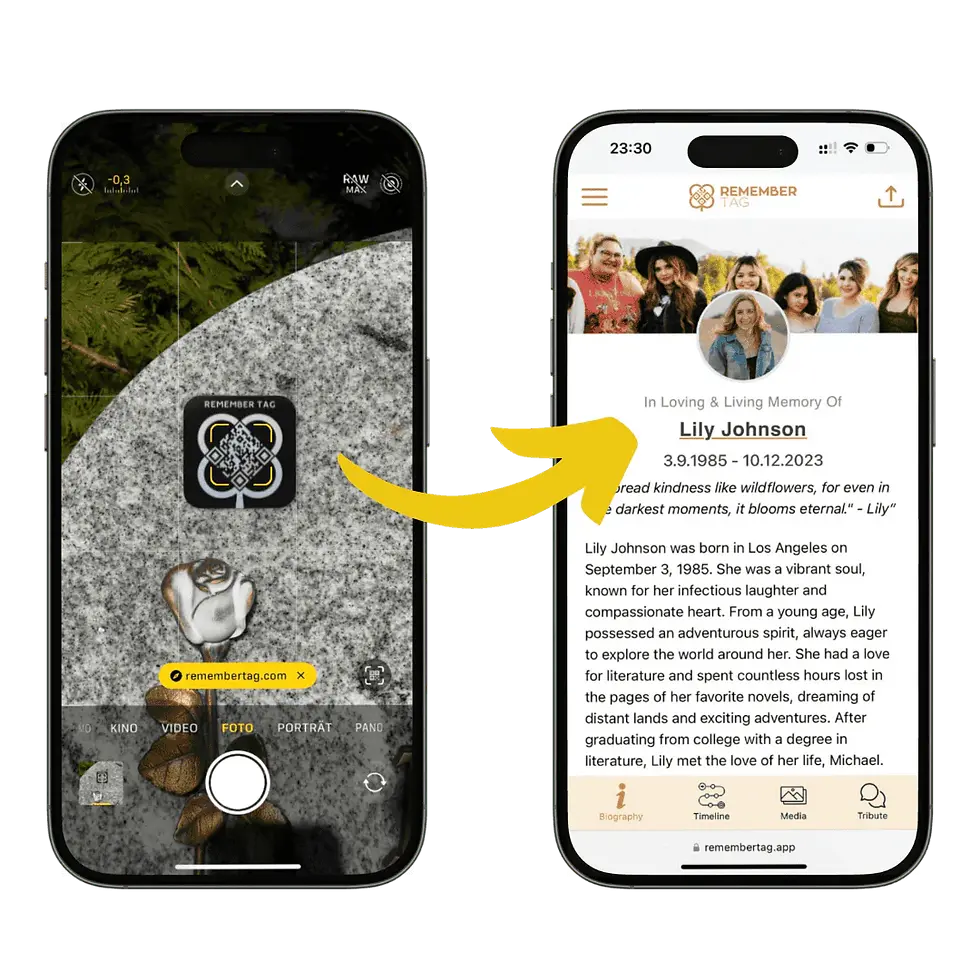Creating a Lasting Digital Legacy: Embracing Innovative Memorialization for Future Generations
- Gofus Memorials, Inc.

- Apr 17
- 4 min read
In today’s digital age, remembering our loved ones is transforming alongside our relationship with technology. The traditional methods of memorialization, often defined by headstones and cemeteries, are now enriched by innovative digital practices. This blog post explores these modern memorialization techniques that help create lasting legacies, ensuring that the memories of our loved ones are preserved for generations to come.

The Shift Towards Digital Memorialization
As technology has become more and more of a crucial part of our lives, memorialization must evolve too. Digital memorialization allows families to celebrate their loved ones in meaningful ways. Through online tributes, families can showcase a wealth of memories, stories, and legacies that future generations can easily access and appreciate.
Consider a vibrant online tribute that acts as a digital scrapbook. This may include hundreds of photos, videos, timelines, and heartfelt anecdotes that reflect a person's life. For instance, a family recently created a digital memorial for a beloved grandmother, compiling over 150 family photos and more than 30 video clips that narrate her life story. Such innovations provide comfort and promote a sense of connection in ways that traditional memorials sometimes cannot.
What is Digital Memorialization?
Digital memorialization refers to various modern techniques for honoring those we have lost, utilizing platforms that resonate with younger audiences. From personalized websites to dedicated social media memorial pages, these formats allow families to commemorate their loved ones in vibrant, accessible ways.
A striking example is LifeStory Tag, a digital QR code service that integrates seamlessly with traditional memorials. When visitors scan the QR code on a headstone, they are directed to a unique online memorial page filled with photos, tributes, and stories. This allows families to share rich narratives and ensure their loved one’s memory is just a scan away.
The Benefits of Digitally Preserving Memories
Adopting digital memorialization offers numerous advantages:
1. Accessibility
Digital memorials can be accessed from anywhere in the world. Friends and family can connect with cherished memories whenever they wish. A recent study revealed that 75% of families highly value the ability to visit digital tributes online, regardless of their location, reinforcing connections across distances.
2. Enhanced Storytelling
Unlike traditional headstones that offer limited space, digital platforms enable families to expand on that information to convey deep narratives about their loved ones. Family and friends can contribute personal stories, photos, and videos, creating a multi-dimensional understanding of an individual's life. One family recently highlighted their father’s journey by collecting testimonies from 20 friends, revealing various sides of him that they had never known before.
How to Create a Digital Legacy
Establishing a meaningful digital legacy involves several thoughtful steps:
Step 1: Choose a Platform
Choose an appropriate digital platform for your loved one's memorial. Options include QR code technology, dedicated memorial websites, and social media pages. Each has its advantages, so think about what aligns best with your family and the stories you wish to share. It's common to use several platforms together to strengthen the digital presence. For example, families frequently integrate various digital platforms by attaching a LifeStory Tag QR code tile to a physical memorial. This directs visitors to a personal website and social media links, making sharing easier.
Step 2: Collect Memories
Gather various content types, such as photos, videos, and written anecdotes that showcase your loved one's essence. Invite family and friends to join in, encouraging them to share their memories. A collaborative effort not only enriches the memorial but also strengthens family and community ties.
Step 3: Design and Organize
Organize the collected content for easy navigation. Clearly categorize different types of memories, like achievements, hobbies, and quotes, to help visitors engage better with the material. Highlight special memories, such as a beloved family recipe or a cherished vacation, to further encapsulate the personality of the deceased.
Step 4: Promote and Maintain
Share the digital memorial widely to keep it alive. Encourage family and friends to interact, whether by adding their memories or reminiscing about shared moments. Regular updates to the memorial can keep it fresh, ensuring it remains a relevant space for reflection.

The Future of Memorialization
The future of memorialization will undoubtedly continue to be influenced by technological advancements. As new innovations arise, opportunities for personalization and interactivity will expand. For example, virtual reality (VR) experiences could soon allow people to "visit" significant locations from a loved one’s life, offering profoundly immersive memorial experiences.
As technology continues to advance, it is likely that memorialization will integrate both physical and digital elements, providing families with multiple avenues for remembrance.
In Closing
Creating a lasting digital legacy through innovative memorial practices is not merely about commemorating a life; it is about building connections, preserving memories, and welcoming the future.
As we progress in this digital age, merging technology with traditional memorialization ensures that our loved ones are remembered in ways that resonate across time. By embracing digital solutions such as LifeStory Tag QR code memorialization, families can craft meaningful legacies that endure through the years.
As we navigate this shift towards memorialization, we start to weave a rich digital tapestry that honors lives and connections. This evolution will pave the way for a future where every story remains cherished and celebrated.





.png)
